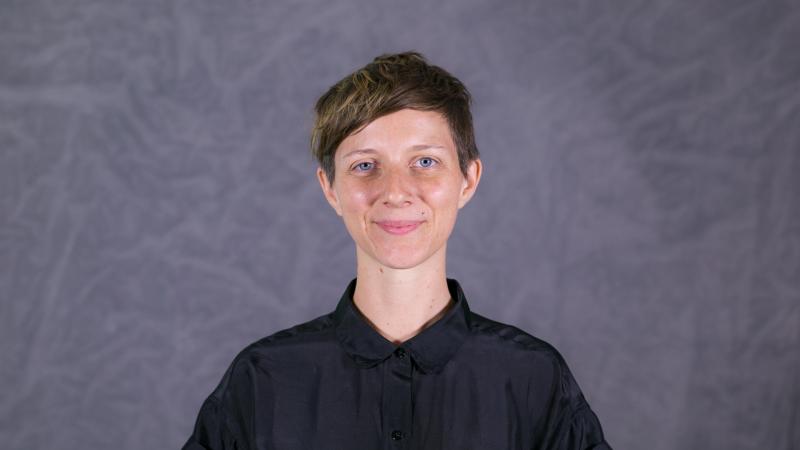Carrie McKnelly Announced as 2015-16 LeFevre Fellow
The Austin E. Knowlton School of Architecture welcomes Carrie McKnelly as the Howard E. LeFevre ’29 Emerging Practitioner Fellow for 2015–16. The LeFevre Fellowship is awarded annually to an architect who is beginning to make their mark on the profession and provides the practitioner with a platform to develop their research over the academic year. The Fellowship culminates in the spring semester with a public lecture, monograph, and exhibition in the school’s Banvard Gallery.
McKnelly received her Bachelor of Architecture degree from Pratt in 2008 and is a 2015 graduate of the Massachusetts Institute of Technology, receiving her Master of Science in Architectural Studies. MIT’s Master of Science obtained through the Computation and Design Group is a post-professional degree program focused on research. The entire school is open to this group, allowing the candidate to obtain skills from any discipline required to pursue their research.
McKnelly’s research is focused on tensile structures and knit patterns that have performance-based criteria. Her approach is to compute the material pattern and organize the fibers in a way that relate to the structure, and to assess if the patterns can start to follow some of the stresses within the form.
“I was coming from Pratt and the world of architecture,” said McKnelly. “We had our own building and we were architects. That’s what I knew architecture school to be: a building of studios, and you’re with your classmates. Then I went to MIT and thought ‘there’s other disciplines.’ We didn’t have our own building; we had a series of rooms around the dome. You’re integrated into the whole school and seeing what other people are doing, but you’re also encouraged to take classes outside of your discipline. I started to touch computer science and electronics and spent a lot of time with the engineers.”
In addition to Kevlar and metal, she has also experimented with a polyester material similar to one used by Nike. At MIT, she conducted tests in the engineering lab to evaluate how much stress the fibers could take before breaking. A tensile stretching machine in the lab allowed her to test many variables and knit patterns for polyester fiber.
The goal of McKnelly’s research is to translate this approach to architecture. “The industrial world of knitting is huge,” said McKnelly. “Tensile structures are made by cutting patterns and stitching them together. My idea is more of an integrated material approach, where you design the layout of the fibers. Having precise control of your material structure relates to 3D printing in some ways. Automated knitting was around long before this technology and was used in the home, so there’s a connection to craft that I enjoy.”
McKnelly sees a connection to research conducted at Ohio State’s Materials Science and Engineering Department, who work in areas such as the space industry where the material has to be extremely light and strong. Although her focus is different, some of McKnelly’s ideas of constructing specific textiles relate to the work being done in Materials Science, specifically, smart material driven by performance criteria that helps shape the patterns created.
Despite the connection, she views herself as operating in the world of architecture. “I don’t want to fall too much on the material side, so that I lose the focus of what I got into this in the first place for,” said McKnelly. “This grew out of the work I was doing in the five years after Pratt, where I was building large-scale installations that were made out of thousands of panels that were then stitched together to create a form. Once I went to MIT I started thinking, could the material do more?”


